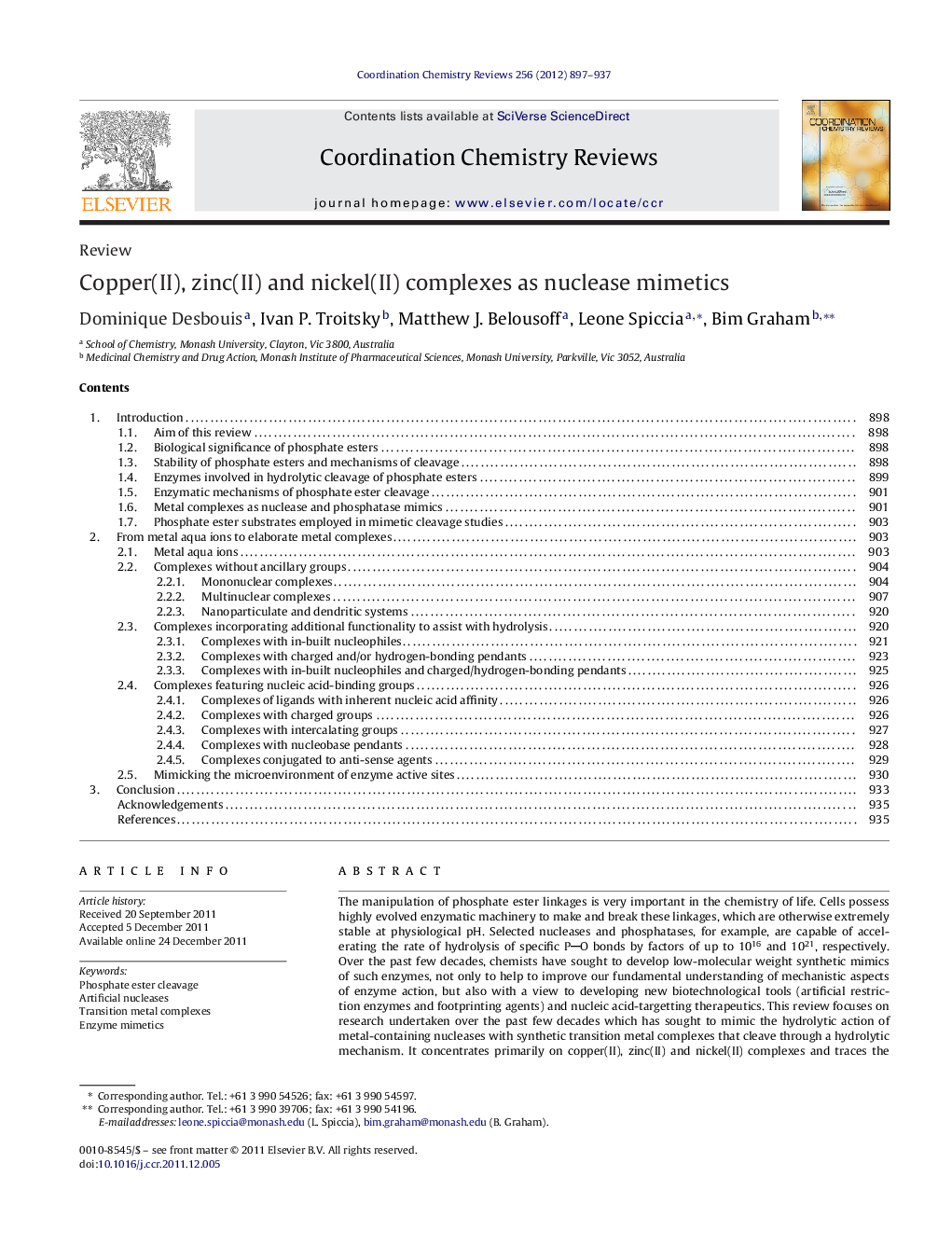| کد مقاله | کد نشریه | سال انتشار | مقاله انگلیسی | نسخه تمام متن |
|---|---|---|---|---|
| 1300502 | 1498771 | 2012 | 41 صفحه PDF | دانلود رایگان |

The manipulation of phosphate ester linkages is very important in the chemistry of life. Cells possess highly evolved enzymatic machinery to make and break these linkages, which are otherwise extremely stable at physiological pH. Selected nucleases and phosphatases, for example, are capable of accelerating the rate of hydrolysis of specific PO bonds by factors of up to 1016 and 1021, respectively. Over the past few decades, chemists have sought to develop low-molecular weight synthetic mimics of such enzymes, not only to help to improve our fundamental understanding of mechanistic aspects of enzyme action, but also with a view to developing new biotechnological tools (artificial restriction enzymes and footprinting agents) and nucleic acid-targetting therapeutics. This review focuses on research undertaken over the past few decades which has sought to mimic the hydrolytic action of metal-containing nucleases with synthetic transition metal complexes that cleave through a hydrolytic mechanism. It concentrates primarily on copper(II), zinc(II) and nickel(II) complexes and traces the evolution of such complexes from simple monomeric systems capable of hydrolysing “activated” phosphate esters, to the more sophisticated designs that mimic aspects of the cooperative interplay between metal ions, key amino acid residues and microenvironmental effects employed by metallo-nucleases and -phosphatases to achieve their remarkable catalytic efficiencies. Whilst current models still fall far short of the natural systems in terms of performance, it is clear that our grasp of the factors that contribute to the activity of nucleases and phosphatases has advanced considerably over the years, thanks in part to the sustained efforts of those seeking to develop complexes with improved hydrolytic activity. This advancement in understanding will in turn continue to stimulate and guide the development of more efficient synthetic cleavage agents.
► Metal-based nucleases that promote the hydrolysis of DNA/RNA are essential to life.
► Synthetic metal complexes are being developed to understand the mechanism of enzyme action.
► Simple mononuclear and polynuclear complexes catalyse phosphate ester hydrolysis.
► More elaborate designs mimic the cooperativity between metal ions, amino acid residues and active site microenvironment.
► New biotechnological tools and nucleic acid-targetting therapeutics are being explored.
Journal: Coordination Chemistry Reviews - Volume 256, Issues 11–12, June 2012, Pages 897–937